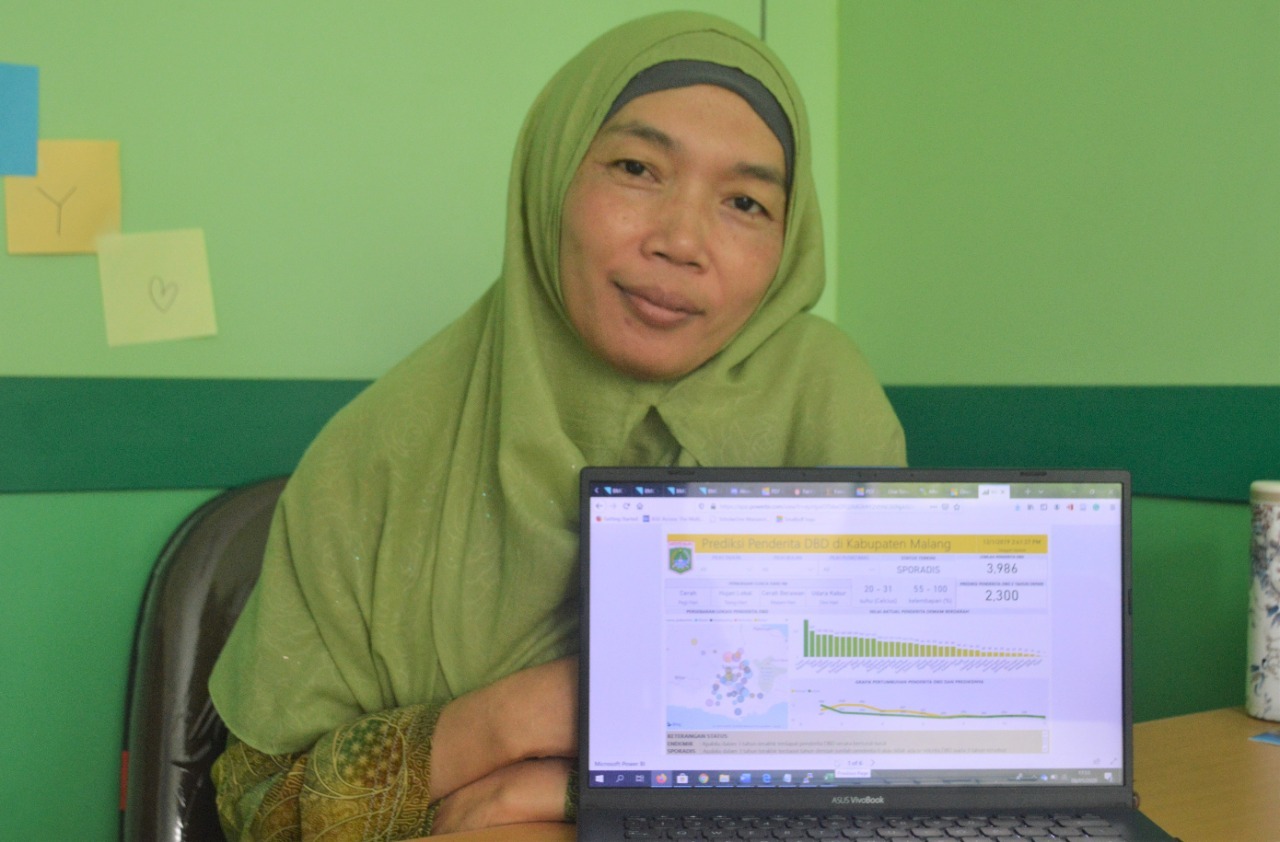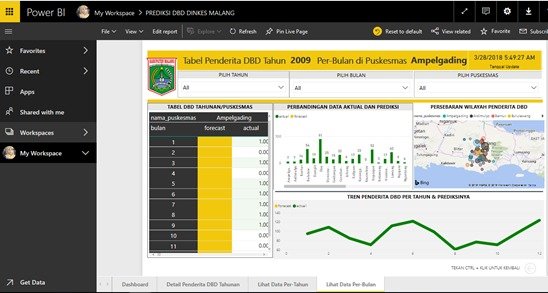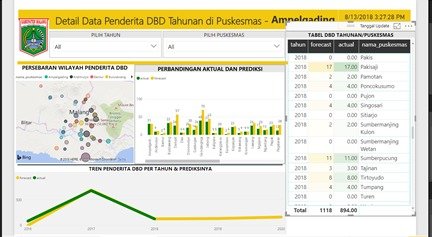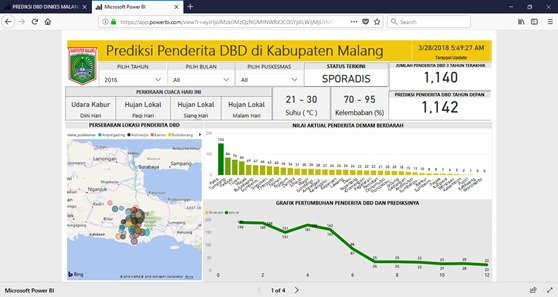Anticipating DHF, ITS Lecturer Develops e-Jatim Sehat Application for Indonesia

Wiwik Anggraeni when showing the application display of e-Jatim Sehat, her creation together with ITS lecturer team
Kampus ITS, ITS News – In order to reduce the risk of the spread of dengue fever (DHF) in the community, a team of lecturers from the Institut Teknologi Sepuluh Nopember (ITS) created an application called e-Jatim Sehat. The three ITS lecturers are Wiwik Anggraeni, S.Si., M.Kom., from the Information Systems Department, Dr. Eko Mulyanto Yuniarno, S.T., M.T., and Prof. Dr. Mauridhi Hery Purnomo, M.Eng., from the Computer Engineering Department.
In addition to the three lecturers, the design process of this application was also assisted by several other lecturers from the ITS Information Systems Department, namely Radityo Prasetianto S.Kom. M.Kom., Edwin Riksakomara S.Kom. M.T., and Dr. Eng. Febriliyan Samopa.
Wiwik Anggraeni explained that the background of the development was the fact that Indonesia is a country with high DHF sufferers. According to data from the Indonesian Ministry of Health, as of January 2019, there were 13,683 cases and 133 people died from DHF. “Therefore, we need a prediction of the spread of DHF for the next few years so that Indonesia is more optimal in anticipating the spread of the disease,” he explained.
This ITS Mathematics Bachelor’s degree graduate further explained that Malang Regency was one of the regions with high DHF levels in East Java. In January 2019, it was recorded that 72 people in Malang Regency was infected with DHF. Therefore, Wiwik and her team chose Malang Regency as the first research experiment. “But it does not rule out the possibility that the application of e-Jatim Sehat can be applied to various regions in Indonesia,” she emphasized.

Display of the data shown in the e-Jatim Sehat application
Wiwik elaborated that the e-Jatim Sehat application is an application that is used to predict, provide visualization, and equipped with a Decision Support System to reduce the spread of dengue in Indonesia.
The targets of this application, according to Wiwik, are health agencies such as Puskesmas and Local Health Offices. “This application will make it easier for health agencies to see the predicted spread of DHF for the next few years,” revealed this woman from Madiun.
Wiwik conveyed that this research, which she began in 2016 with her team from the ITS Information Systems in Higher Education Applied Research (PTUPT), was previously under the Ministry of Research, Technology, and Higher Education (Kemenristekdikti). “The initial research of this application is still limited to prediction and visualization, but we are now developing it further by adding a Decision Support System (DSS),” she confirmed.

Display of the data shown in the Healthy e-East Java application
DSS is a warning and advice that can be done by the Health Office to reduce the amount of DHF spread based on existing predictions. Through this DSS, the Health Office can be better prepared to anticipate the impact of the spread of DHF that will occur. “DSS is also adjusted to the right schedule for the Department of Health in carrying out these anticipatory actions,” elaborated this ITS Informatics Engineering alumnus.
Wiwik also added that besides having a DSS to support the mitigation of dengue spread, the e-Jatim Sehat application also involves many factors in predicting the spread of DHF, so that the data obtained is more accurate. “These factors include climate, temperature, rainfall, wind speed, regional topography, and population,” she identified.

Display of the data shown in the e-Jatim Sehat application
This e-Jatim Sehat application has been tested on the Health Department in Malang Regency. Wiwik mentioned that the public response to this application was very good. The public admitted that they were helped in the preparation for the anticipated action in the spread of DHF in the Malang Regency. “With the provided predictions, the public is helped in making a budget, such as how many immunizations are needed, and others,” she revealed.
Wiwik and her team hope that in the future this application can be used in all health agencies and can reduce the number of dengue fever patients in Indonesia. “In essence, hopefully, this application can be useful for the people of Indonesia,” she expressed. (sin/ory/ITS Public Relations)
Related News
-
Supporting the Development of Material Processes, ITS Professors Utilize Biomass Waste
ITS Campus, ITS News — Innovation in material processes continues to develop to support society’s need for environmentally friendly
January 15, 2020 20:01 -
ITS Professor Ideas for Bio-Corrosion Control in Marine Structures
ITS Campus, ITS News — Coastal and offshore buildings interacting directly with seawater trigger damage, including bio-corrosion. If not
January 15, 2020 20:01 -
ITS Launches the First Marine Floating Solar Power Plant Prototype in Indonesia
ITS Campus, ITS News — Institut Teknologi Sepuluh Nopember (ITS)‘s commitment in realizing the energy transition is getting serious.
January 15, 2020 20:01 -
Targeting Champion, Bayucaraka ITS Launches Flying Robot Innovation
ITS Campus, ITS News – The Bayucaraka team at Institut Teknologi Sepuluh Nopember (ITS) has launched four new flying
January 15, 2020 20:01
